Table of Contents
- School Chemistry Lab Maintenance Handbook
- How to Maintain the School Chemistry Lab Equipment?
- How to Maintain the School Chemistry Lab Furniture?
- Must Have Safety Equipment for Maintaining the School Chemistry Lab
- Bonus Tips for School Chemistry Lab Management
- General Safety Practices Essential to Maintain the School Chemistry Lab
- Takeaway
School Chemistry Lab Maintenance Handbook
School administrators, teachers, and authorities many hurdles when trying to maintain the school chemistry lab. From dealing with broken equipment and chemical stains to ensuring safety standards are met, the task can quickly become overwhelming. Without regular upkeep and proper management, even the best labs can fall into disrepair, leading to safety risks, poor learning experiences, and unnecessary expenses. Fortunately, with the right approach, running a school chemistry lab can become smooth, efficient, and stress-free. This blog offers the ultimate guide to maintaining your chemistry lab. We will be covering essential tips on cleaning, repair, and safety. Keep reading to discover simple yet effective strategies that will reduce the headache of running your lab smoothly.
How to Maintain the School Chemistry Lab Equipment?

Each piece of equipment in the chemistry lab needs to be maintained properly:
Glassware
- Beaker – A beaker is a simple container used for mixing, stirring, and heating chemicals. After use, rinse glass beakers thoroughly with soap and water. Then, store them in the lower rack of a cabinet with glass doors. This way, dust cannot fall into the beaker and disrupt future experiments. Moreover, storing them properly ensures cleanliness, prevents contamination, and keeps the beakers ready for the next use. Therefore, always follow this routine to maintain accurate and safe experimental conditions.
- Conical Flask (Erlenmeyer Flask) – Used for mixing and heating solutions with reduced risk of spills. Store and clean flasks like beakers.
- Test Tubes – Test tubes are small glass tubes used for holding, mixing, and heating substances. After use, clean them properly. Then, store them in boxes with holders to prevent breakage. Additionally, always keep these boxes in a well-ventilated, closed space, such as a glass-door almirah or cupboard.
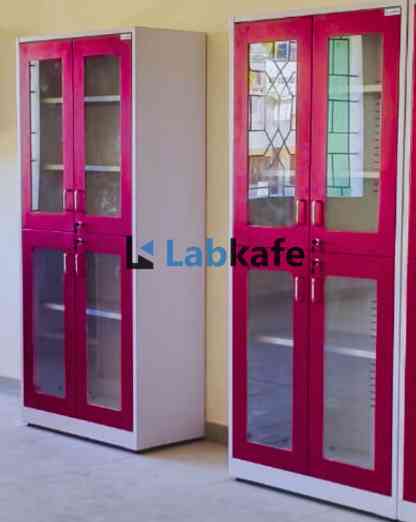
- Test Tube Holder – A clamp used to hold test tubes during heating. Keep ample holders in the lab, so that all students have enough holders to use during experiments. If enough holders aren’t there, students resort to hacks like using paper holders as a makeshift or using the test tube as is during heating. This is very risky, because the paper can catch fire, or the reagents in the tube can boil out, harming the student. Hence, test tube holders are a must for every school chemistry lab.
- Measuring Cylinder (Graduated Cylinder) – Used to measure liquid volumes accurately. Store them along with glassware, ensure dust and humidity does not affect the equipment.
- Watch Glass – A concave glass used for evaporating small amounts of liquid or covering beakers. Store like other glassware.
Additional Equipment
- Bunsen Burner – A gas burner used for heating substances. Teach students to stop the gas supply after use.
- Wire Gauze – A mesh placed over a tripod stand to distribute heat evenly.
- Crucible and Lid – A heat-resistant container for high-temperature heating.
- Evaporating Dish – Used to evaporate liquids and concentrate solutions.
- Pipette – A tool for transferring precise amounts of liquid. Assign one mouth pipette to each student. Mouth pipettes are unhygienic if shared.
- Burette – A long graduated tube used in titration to measure liquid volume precisely. Teach students to handle the burette carefully. Students might break the long glass burette by mistake. Fill the burette by keeping the burette and stand setup on the ground. Then place it on the benchtop to perform titration drop by drop.
- Dropper – A small tool for adding liquid dropwise.
- Glass Stirring Rod – Used for stirring solutions manually. Replace broken or cracked glass rods as they can cause injury.
- Funnel – Used for transferring liquids and filtering mixtures.
- Filter Paper – A porous paper used to separate solids from liquids. Keep them inside packed boxes, to protect from dust and humidity.
- pH Paper – A strip of paper that changes color to indicate acidity or alkalinity. You must keep them absolutely dry.
You might be wondering how to deal with humidity in tropical countries. The best way is to store the apparatus or equipment for the school chemistry lab in a closed cupboard and then put silica gel in corners in the cupboard. It will absorb the moisture, keeping the apparatus dry, hence rust and bacteria free.
How to Maintain the School Chemistry Lab Furniture?
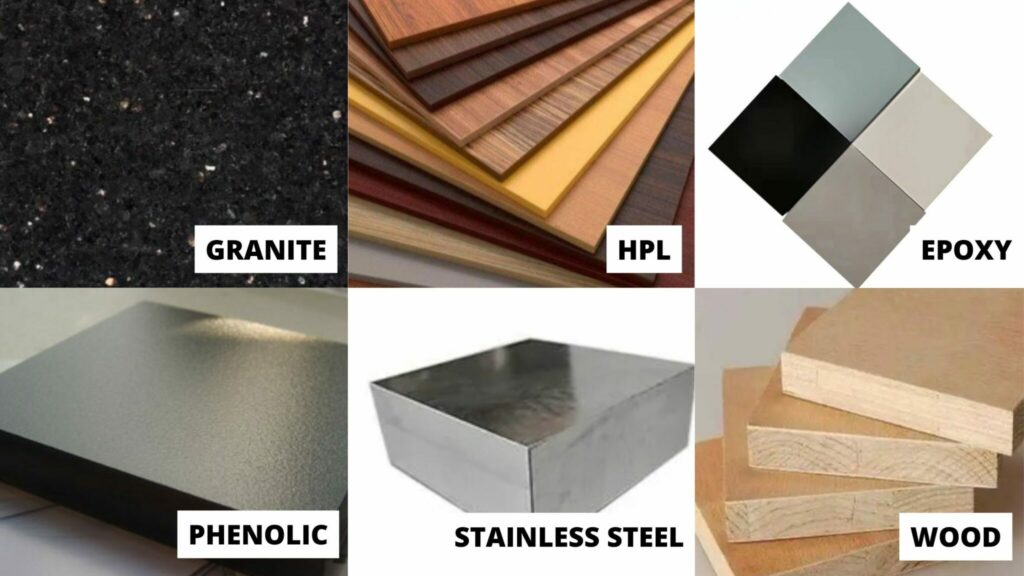
Choice of School Chemistry Lab Worktops
These are the options for Chemistry Lab Worktops that are most commonly used:
1. Granite Worktops
Granite worktops are useful in chemistry laboratories for schools because they can withstand the harshest acids. They are very easy to clean with 70 percent ethanol solution and are relatively affordable.
2. Epoxy Resin Worktops
- Highly durable and resistant to extreme conditions, making them ideal for laboratory use
- Heat-resistant, bacterial-resistant, chemical-resistant, and flame-retardant
- Typically available in black; seamless and monolithic when installed
- One inch thick, weighing approximately 11 pounds per square foot
- Formed by mixing liquid compounds that harden in molds
- Easy to clean and maintain
- Preferred choice for fixed lab casework due to strength, reliability, and low maintenance
3. Phenolic Resin Worktops
- Lightweight yet durable; weigh 7.2 pounds per square foot at one-inch thickness
- Made by layering recycled paper with phenolic resin and applying extreme heat
- Resistant to bacteria, chemicals, moisture, and moderate to high corrosion
- Can withstand continuous heat exposure up to 350°F
- Available in various surface colors; core is typically black
- Commonly used in biological, chemical, clinical, and analytical labs
4. Stainless Steel Worktops
- Offer excellent hygienic and antimicrobial properties
- Made of chromium and nickel, providing high resistance to rust, corrosion, and temperatures over 1500°F
- Non-porous surfaces prevent absorption and contamination
- Commonly used in biomedical, pharmaceutical, food testing labs, and hospitals
- Long-lasting, easy to clean, and resistant to heat and chemicals
- Ideal for maintaining sterile and safe laboratory environments
5. Chemical Resistant Laminate Worktops
- Made by coating phenolic resin onto kraft paper and covering it with synthetic resin
- Resistant to laboratory chemicals and can withstand heat up to 275°F
- Used in labs requiring non-contaminated surfaces, such as dental, pathology, urology, photographic darkrooms, and product testing labs
- Decorative surface provides aesthetic appeal along with high chemical resistance
6. Wood Worktops
Wood worktops, typically made of rock maple, provide a sturdy and long-lasting surface. End-grain wood is used for strength by gluing smaller blocks together. These worktops have poor moisture and bacterial resistance but offer a warm and rich appearance. They are primarily used in mechanical labs where aesthetics and durability are essential.
7. Trespa Worktops
Trespa worktops are highly versatile and suitable for various laboratory applications. Made using reinforced natural fibers and thermosetting resins bonded under high pressure, they are impact-resistant, moisture-resistant, and chemical-resistant. They are also scratch-resistant, easy to clean, and durable. Trespa worktops are commonly used in pharmaceutical laboratories.
8. PVC Laminate Worktops
PVC laminate worktops are made by compressing polyvinyl chloride layers under extreme pressure. They offer excellent chemical resistance, moisture resistance, and durability, making them ideal for high-traffic laboratory environments. These worktops are also cost-effective and low maintenance, requiring only mild cleaning agents. They provide various design options, from monochromatic to multicolored finishes, making them suitable for different lab settings. PVC laminate is heat-resistant and impact-resistant, ensuring longevity in demanding lab conditions.
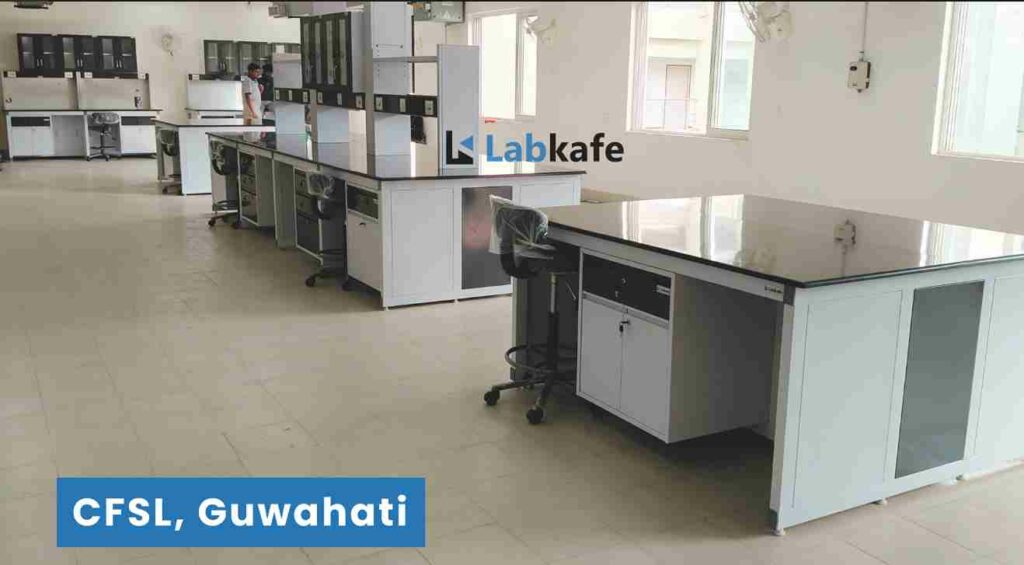
To maintain the school chemistry lab furniture, follow these principles:
Work Surface Maintenance
- Use PVC worktops for acid-based experiments; avoid wooden benches.
- Clean spills carefully:
- Acid spills – Neutralize with sodium bicarbonate, then clean with water.
- Ammonia spills – Rinse with water and ensure proper ventilation.
- Use a spill pad and mop the area thoroughly.
Storage Guidelines
- Store concentrated acids in separate sections of the lab.
- Store Kipp’s apparatus in a separate chamber to contain fumes.
- Use separate cabinets with glass doors for:
- Glass beakers
- Plastic containers
- Holders for beakers and test tubes
- Separate solutions and dry chemicals in designated storage areas.
- Place hazardous chemicals away from workbenches.
- Store generic chemicals at eye level for easy access.
Furniture and Lab Layout
- Ergonomically placed furniture for easy navigation.
- Separate wet and dry areas to prevent cross-contamination.
- Work areas and storage areas must be separate – do not store items in workspaces.
- Ensure clear pathways for movement between workstations and storage areas.
- No sharp edges on furniture to prevent injuries.
- Adequate space for students to move safely.
Gas and Electricity Safety
- Place gas and electricity pipelines along lab sides to prevent obstruction.
- Regularly inspect gas pipelines for leaks and repair if needed.
- Prevent sharp objects from damaging gas and electricity lines.
Hygiene and Waste Disposal
- Regularly clean lab worktops and benches.
- Place gloves and waste disposal units away from work areas.
This checklist ensures the lab remains safe, clean, and efficiently organized for both students and teachers.
Must Have Safety Equipment for Maintaining the School Chemistry Lab
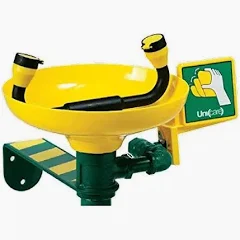
To maintain the school chemistry lab, fit this safety equipment in place:
- Eye wash stations
- Safety showers
- Fire extinguishers
- First aid kits
- Chemical fume hoods
- Fire blankets
- Other necessary equipment based on the experiments conducted
Bonus Tips for School Chemistry Lab Management
- Train Personnel – Train the teachers and lab supervisors to operate safety equipment such as eyewash stations, first aid kits, emergency showers etc. For example, when a student suffers acid burns, what do you do?
- Provide Ample Equipment
- Ensure enough equipment is available for all students to complete experiments.
- Purchase extra materials to account for potential accidents.
- Ensure Proper Lighting
- Maintain sufficient artificial and natural lighting for safe and accurate experiments.
- Choose a lab location with windows to improve visibility and expand experimental possibilities.
- Make Sufficient Storage Available
- Provide adequate storage to keep equipment organized and accessible.
- Prevent clutter and minimize safety risks by planning an efficient storage system.
- Ensure Ventilation
- Install a ventilation system to remove contaminated air and ensure a fresh airflow.
- Protect students from exposure to hazardous chemicals and gases.
- Facilitate Flexibility
- Design the lab to accommodate different scientific disciplines and varying class sizes.
- Use lightweight, non-fixed furniture to allow easy reconfiguration.
- Create Clear Avenues for Movement
- Design the lab with clear pathways for teachers to assist students effectively.
- Keep exits and safety systems unobstructed for quick access during emergencies.
- Incorporate Engaging Design
- Make the lab visually appealing with bright colors and educational imagery.
- Foster student interest in science through a stimulating and enjoyable environment.
General Safety Practices Essential to Maintain the School Chemistry Lab

When deciding protocols to maintain the school chemistry lab, ensure these safety precautions are taken:
- Wear Safety Goggles – Department-approved safety goggles must be worn at all times. Glasses and contact lenses are not acceptable.
- No Food or Drinks – Food and drinks are prohibited in the lab as they may pick up toxic chemicals.
- Avoid Inhaling Fumes – Use fume hoods for dangerous or irritating chemicals. Waft odors toward your nose with your hand.
- Do Not Taste Chemicals – Some chemicals are highly corrosive and toxic even in small amounts.
- No Unauthorized Experiments – Only perform approved experiments under an instructor’s supervision.
- Do Not Remove Lab Items – Removing chemicals, glassware, or equipment from the lab is illegal.
- Label All Containers – Clearly label all containers to identify their contents.
- Do Not Return Chemicals to Bottles – Once removed, do not return the reagent bottle. Use clean, dry spatulas and take only the required amount.
- Keep Chemicals in Designated Areas – Do not move original containers to your benchtop.
- Handle Hot Objects with Care – Use beaker tongs for hot containers. Burns are common, so be cautious with heated objects.
- Rinse Chemical Spills Immediately – Wash affected skin with large amounts of water.
- Dispose of Broken Glassware Properly – Place broken glass in the designated crock and get a replacement from the instructor.
- Follow Waste Disposal Guidelines – Dispose of chemicals as instructed. Some liquids may go down the sink with water, while others require designated waste containers.
- Report Accidents Immediately – Inform the instructor about all accidents.
- Know Emergency Equipment Locations – Locate and learn how to use the safety shower, fire extinguisher, eye-wash fountain, fire blanket, and fire exit.
Takeaway
Maintaining a chemistry lab requires consistent care, proper storage, regular cleaning, and strict safety practices. By following the right procedures and using durable, resistant worktops, schools can ensure a safe, efficient, and long-lasting lab environment. With thoughtful maintenance, the chemistry lab remains a reliable space for hands-on learning.
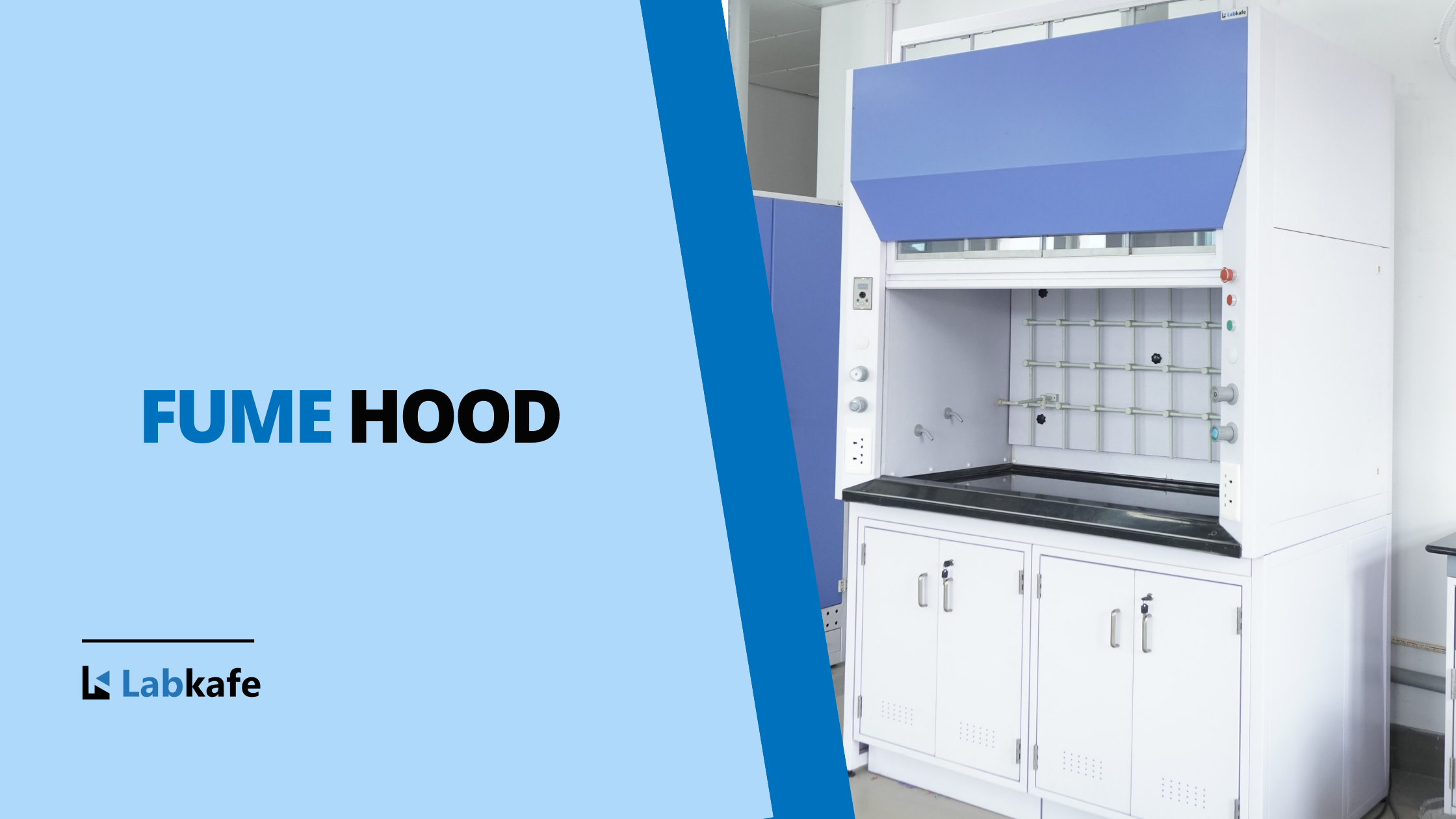
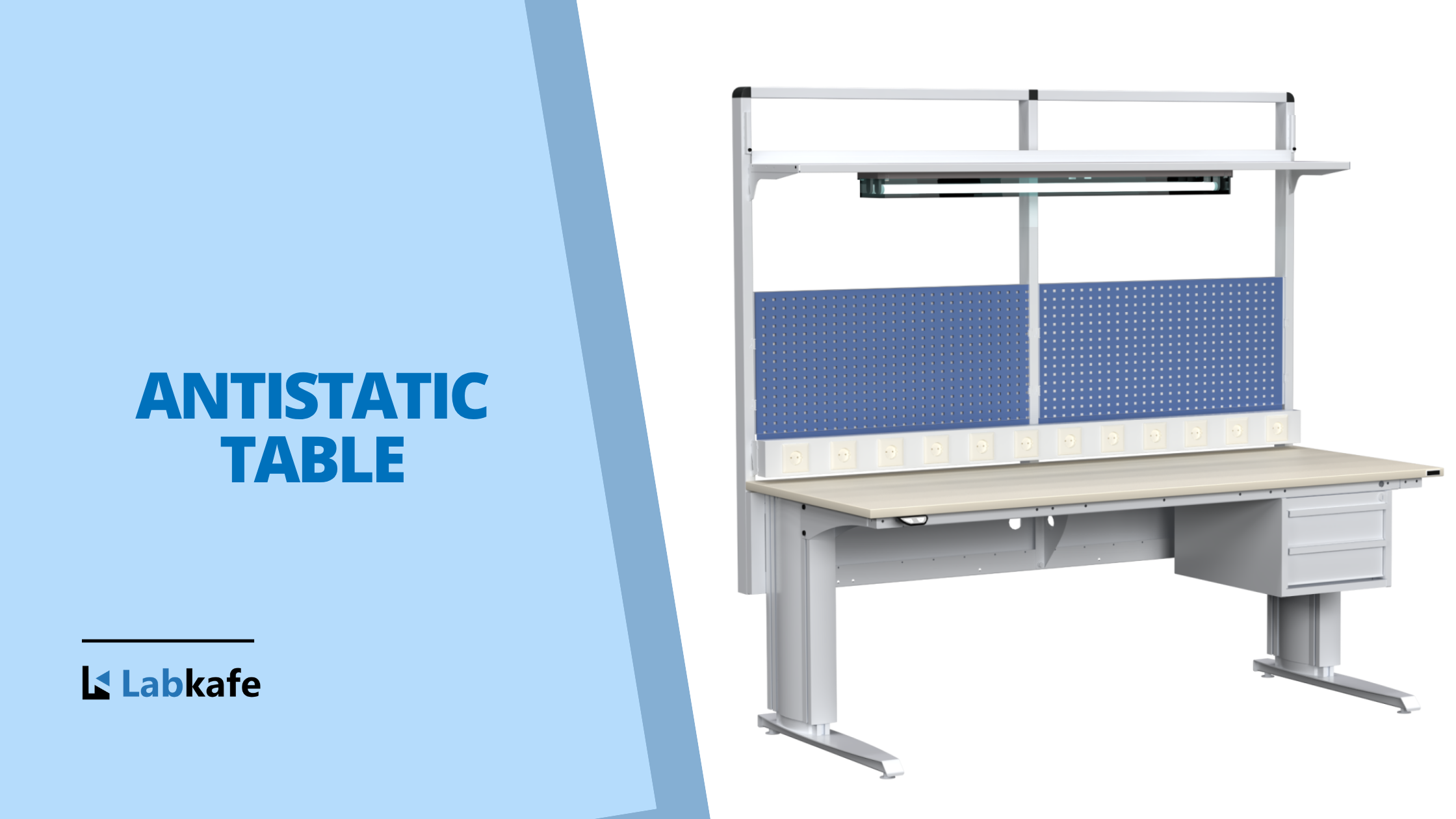
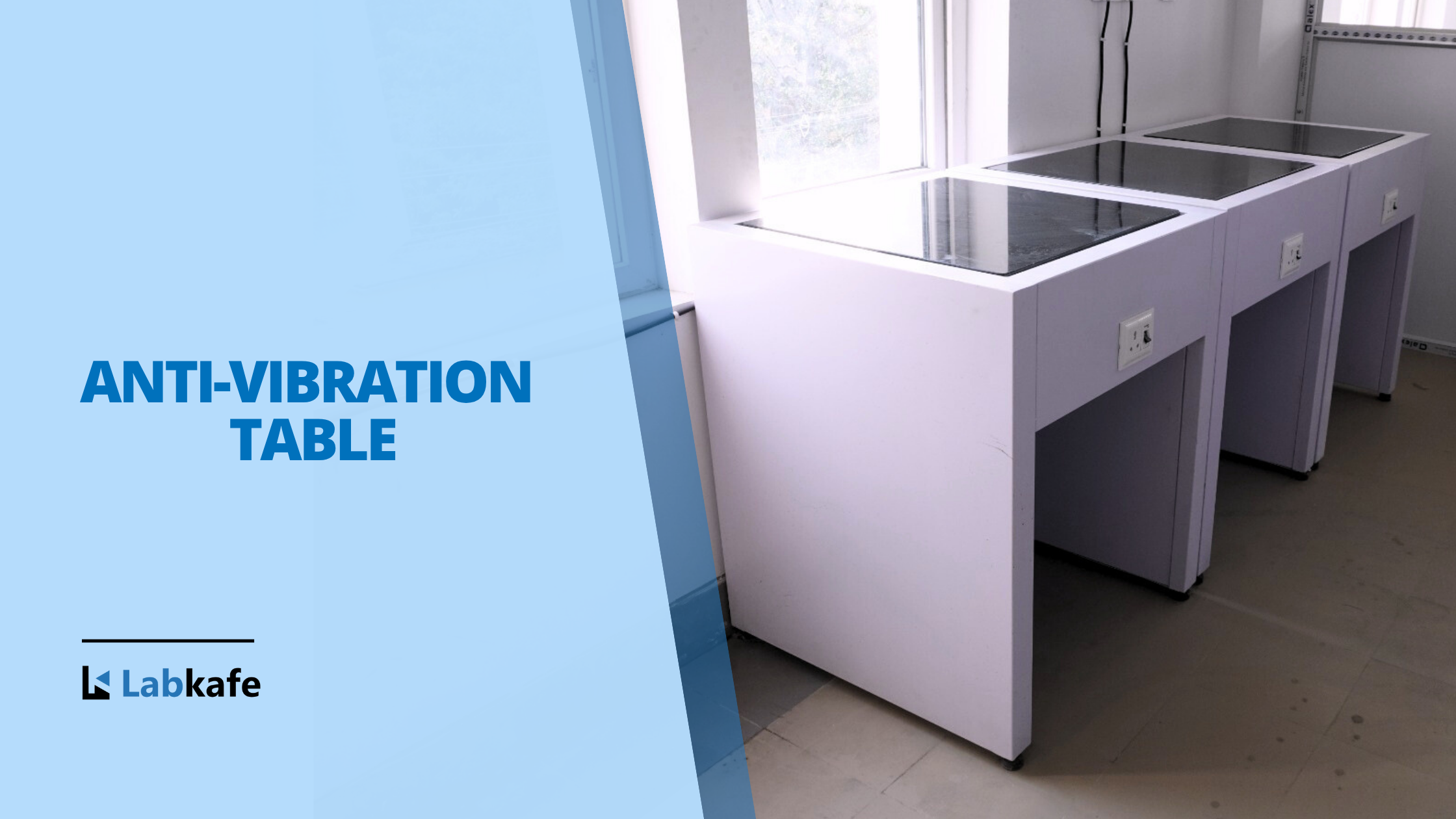
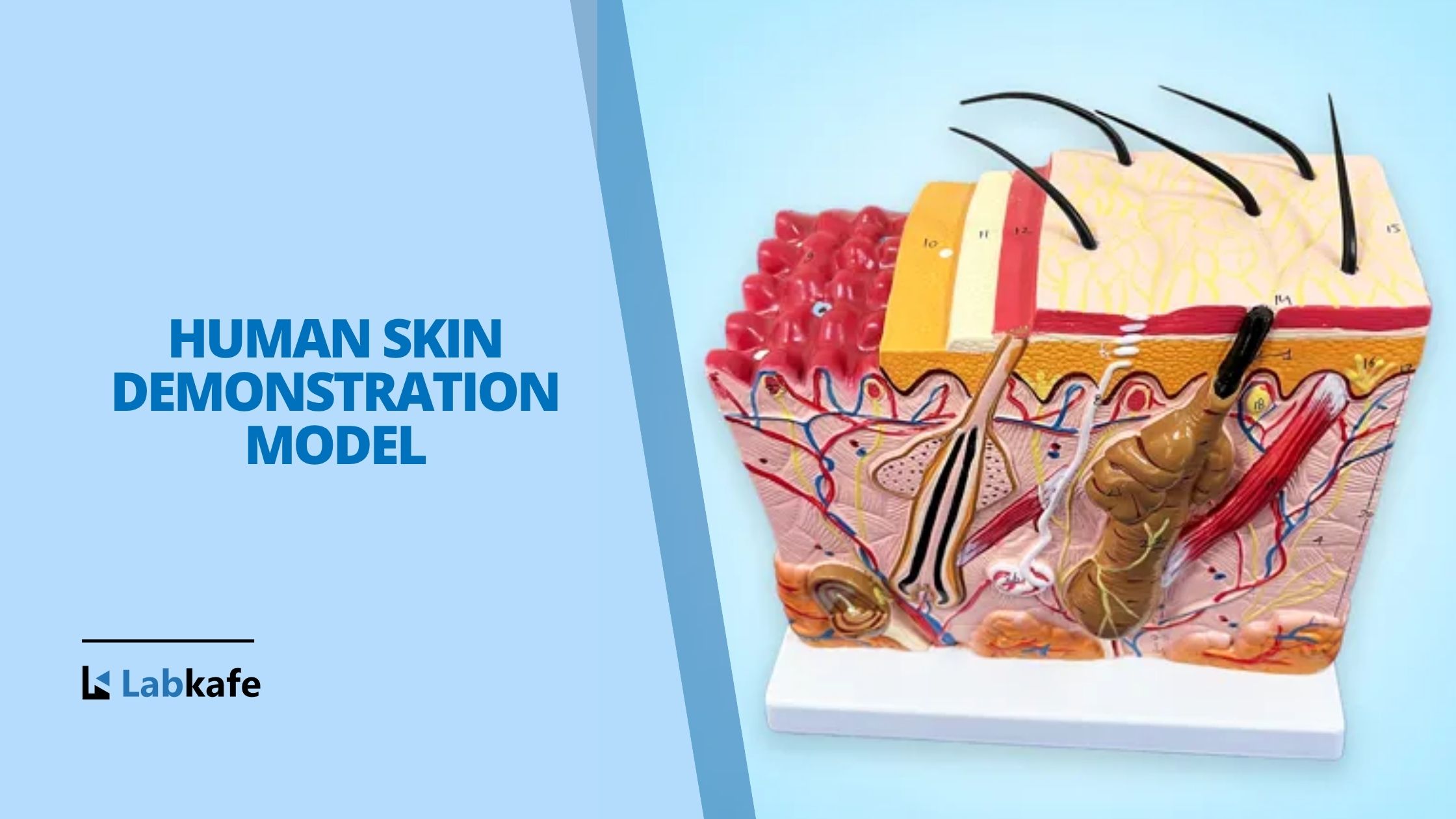
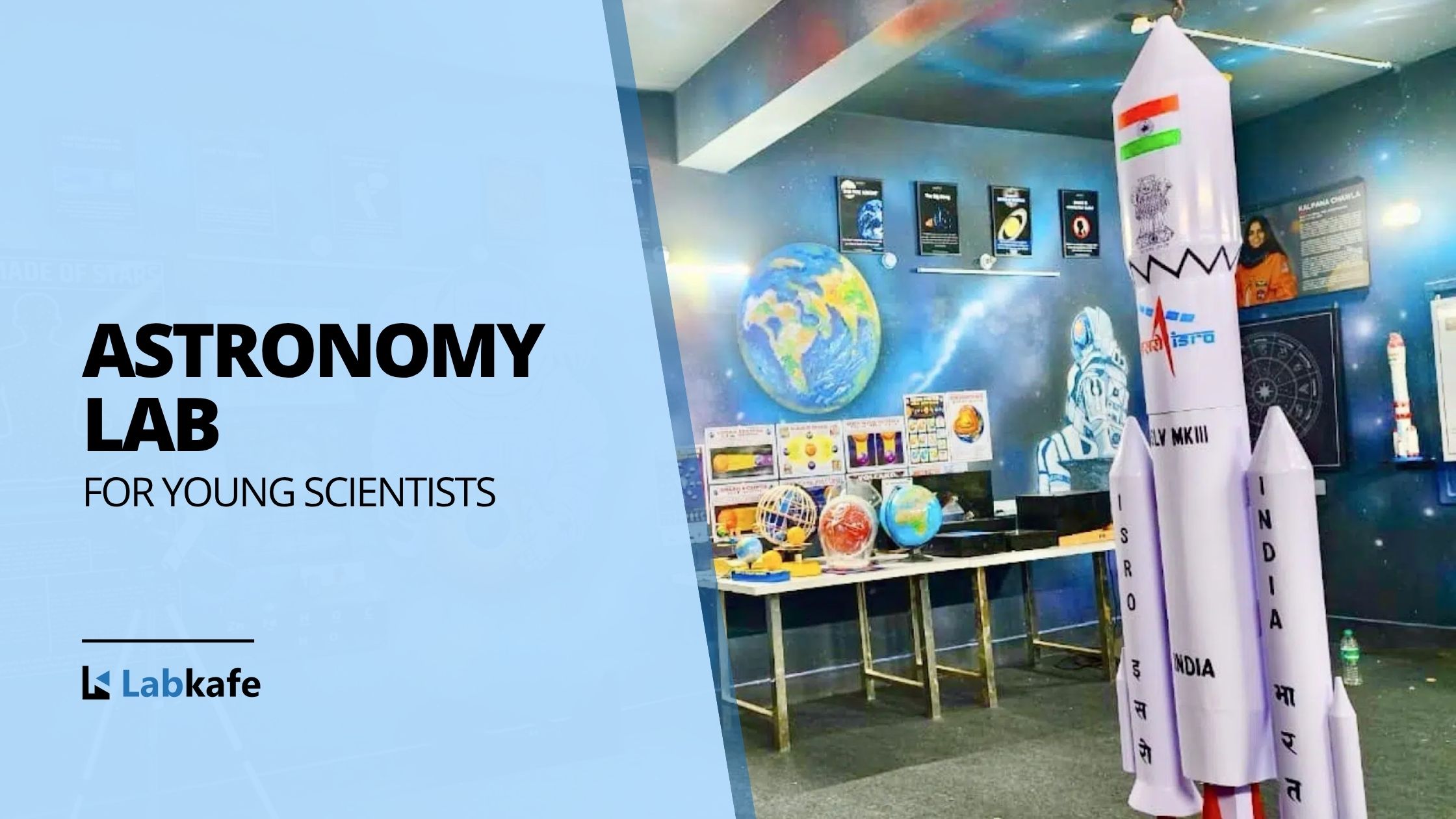
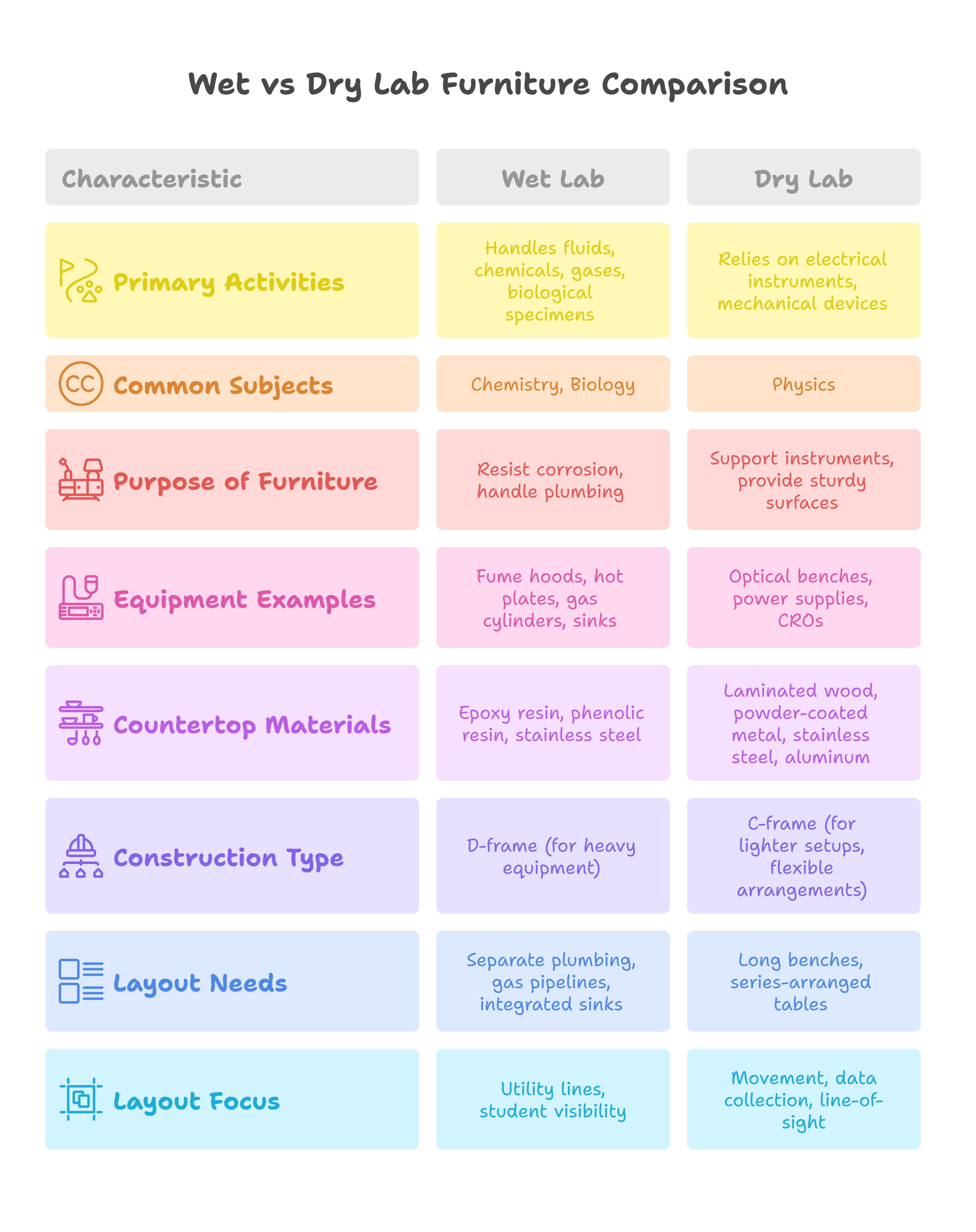
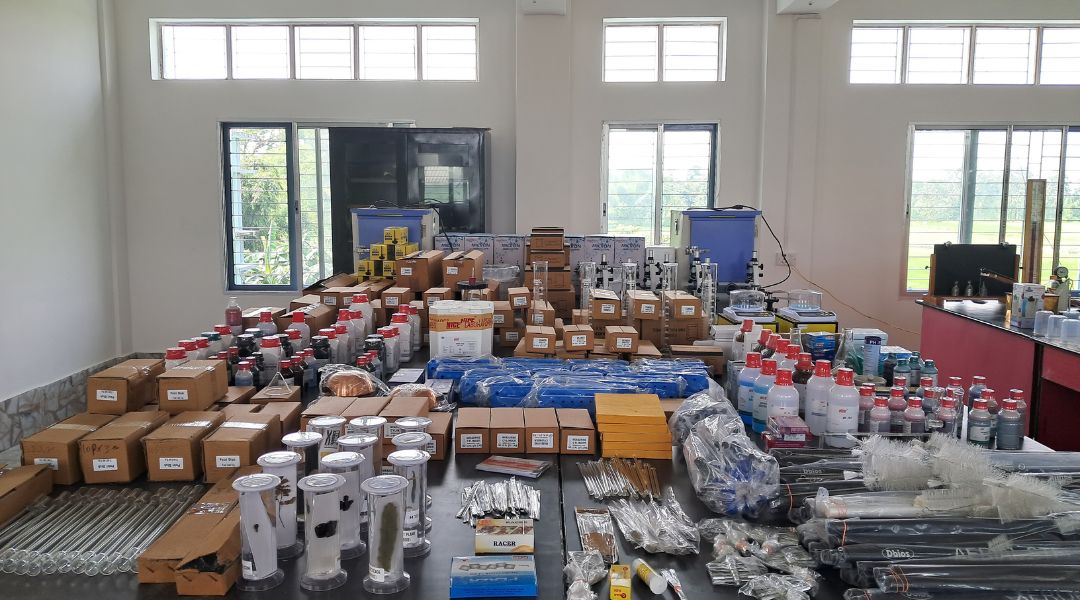
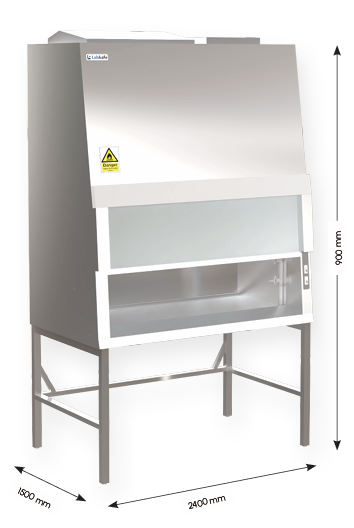
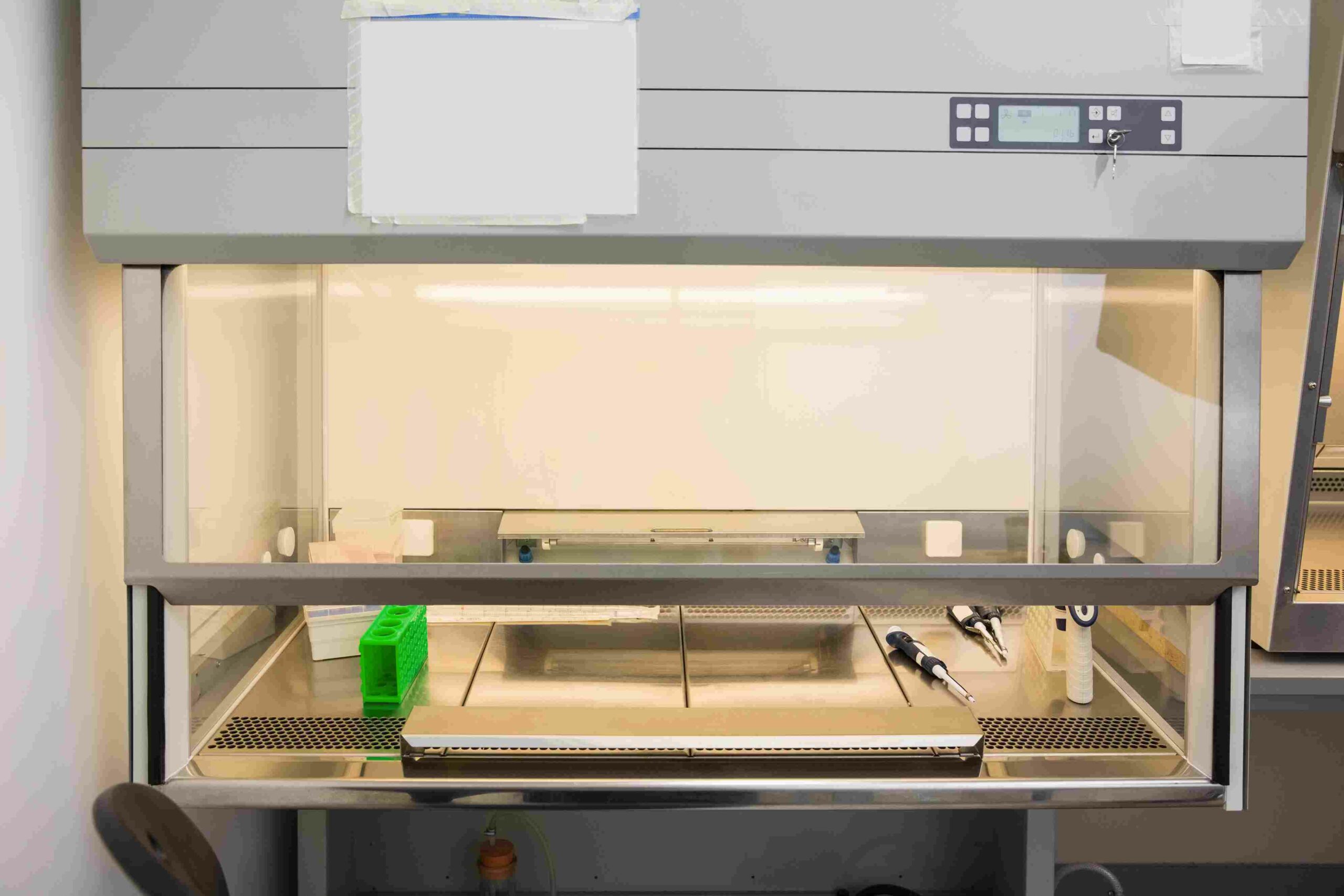
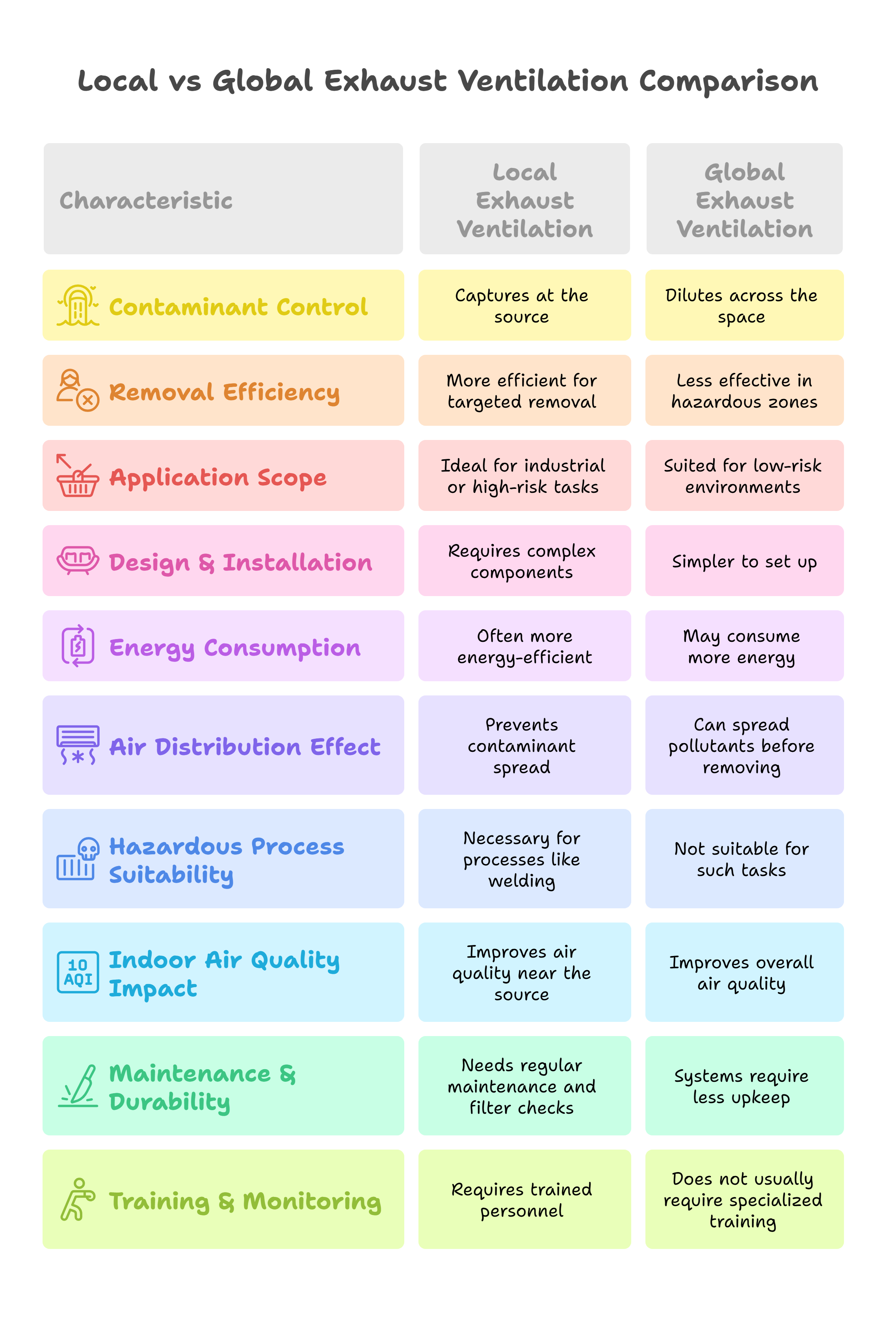
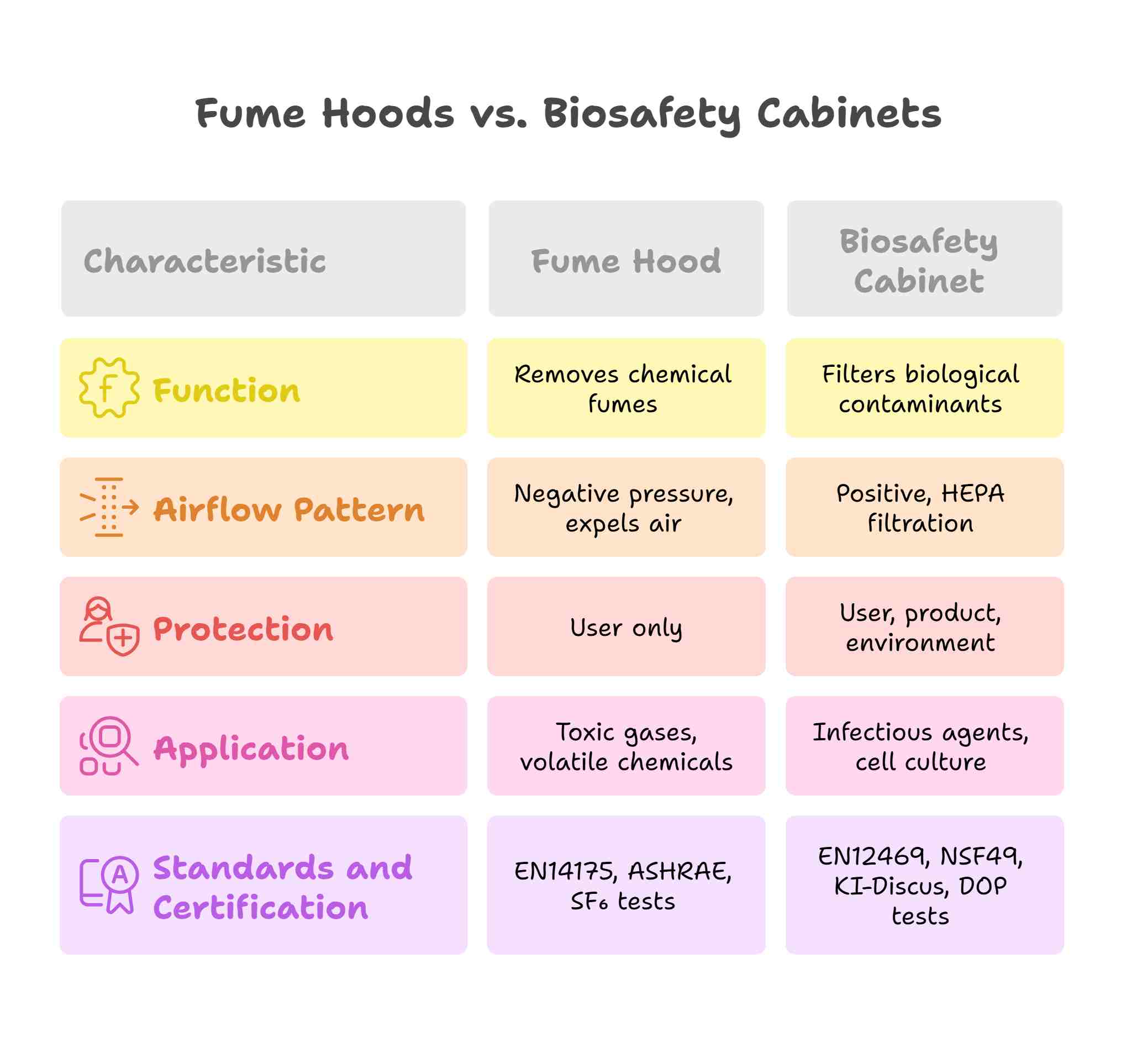
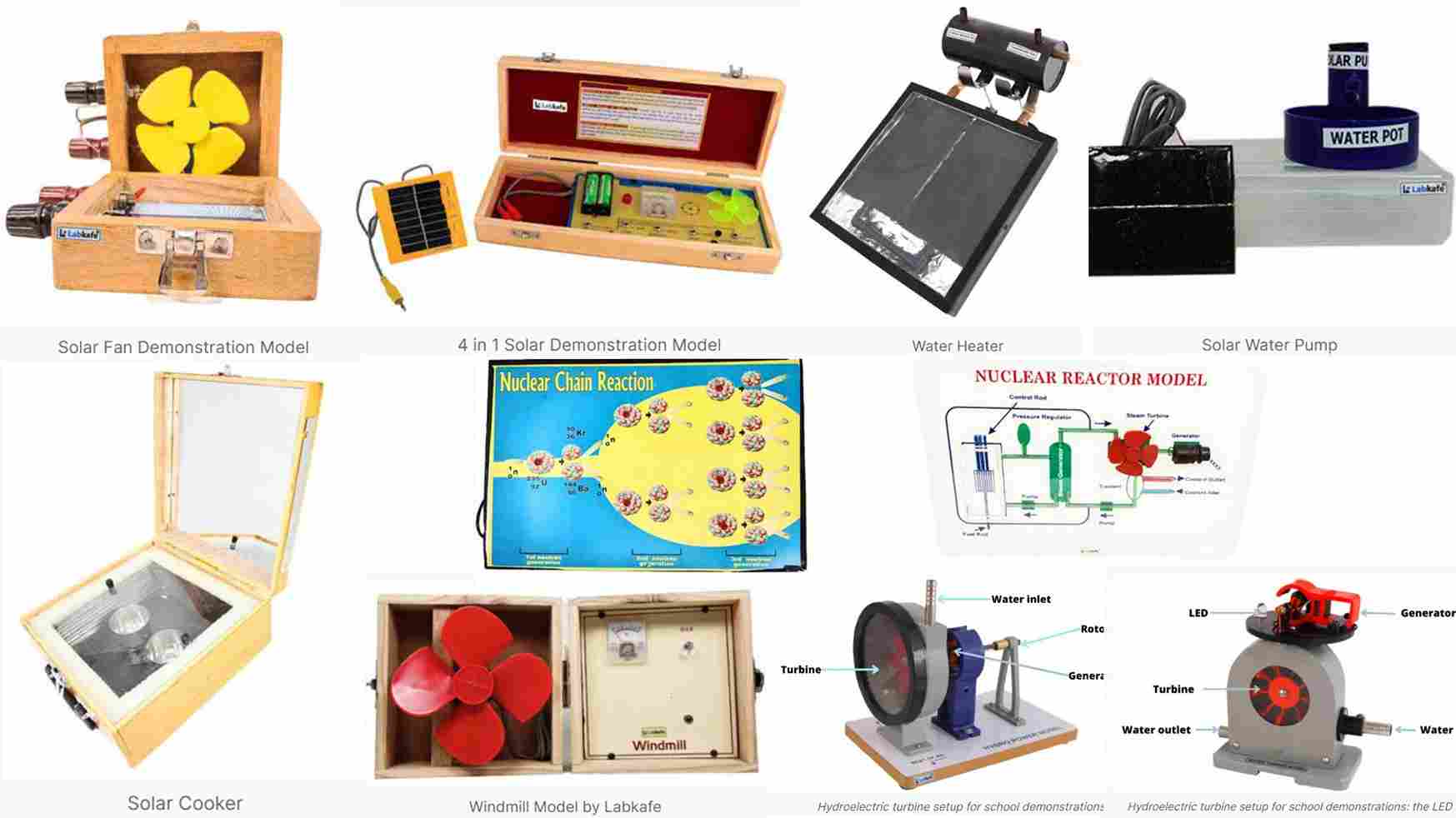
Leave a Reply